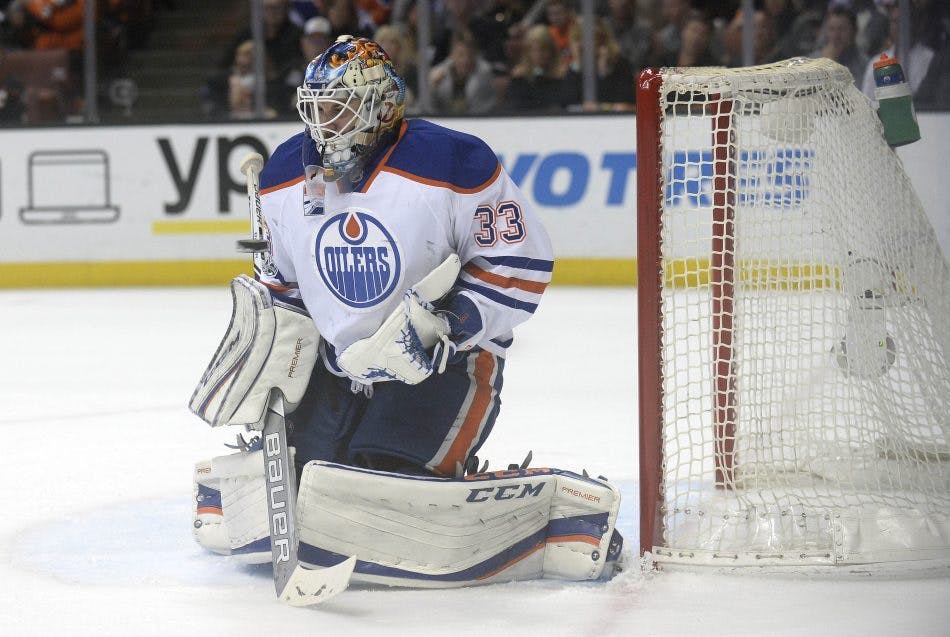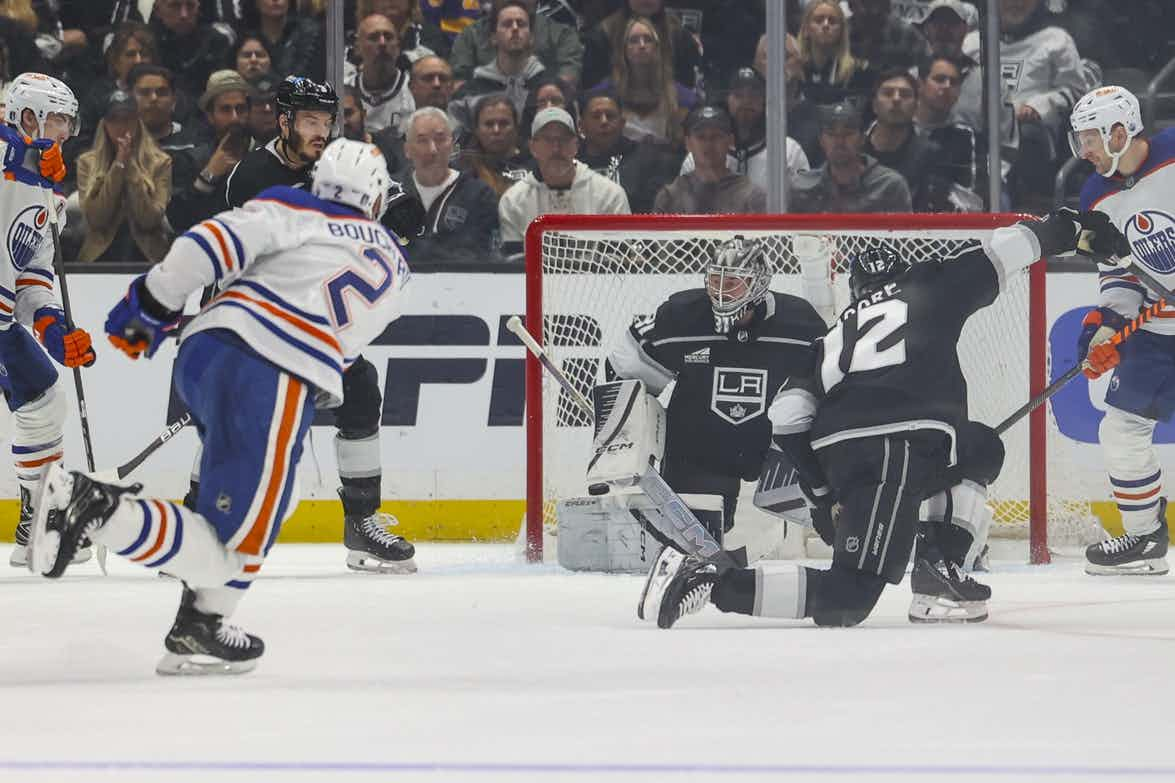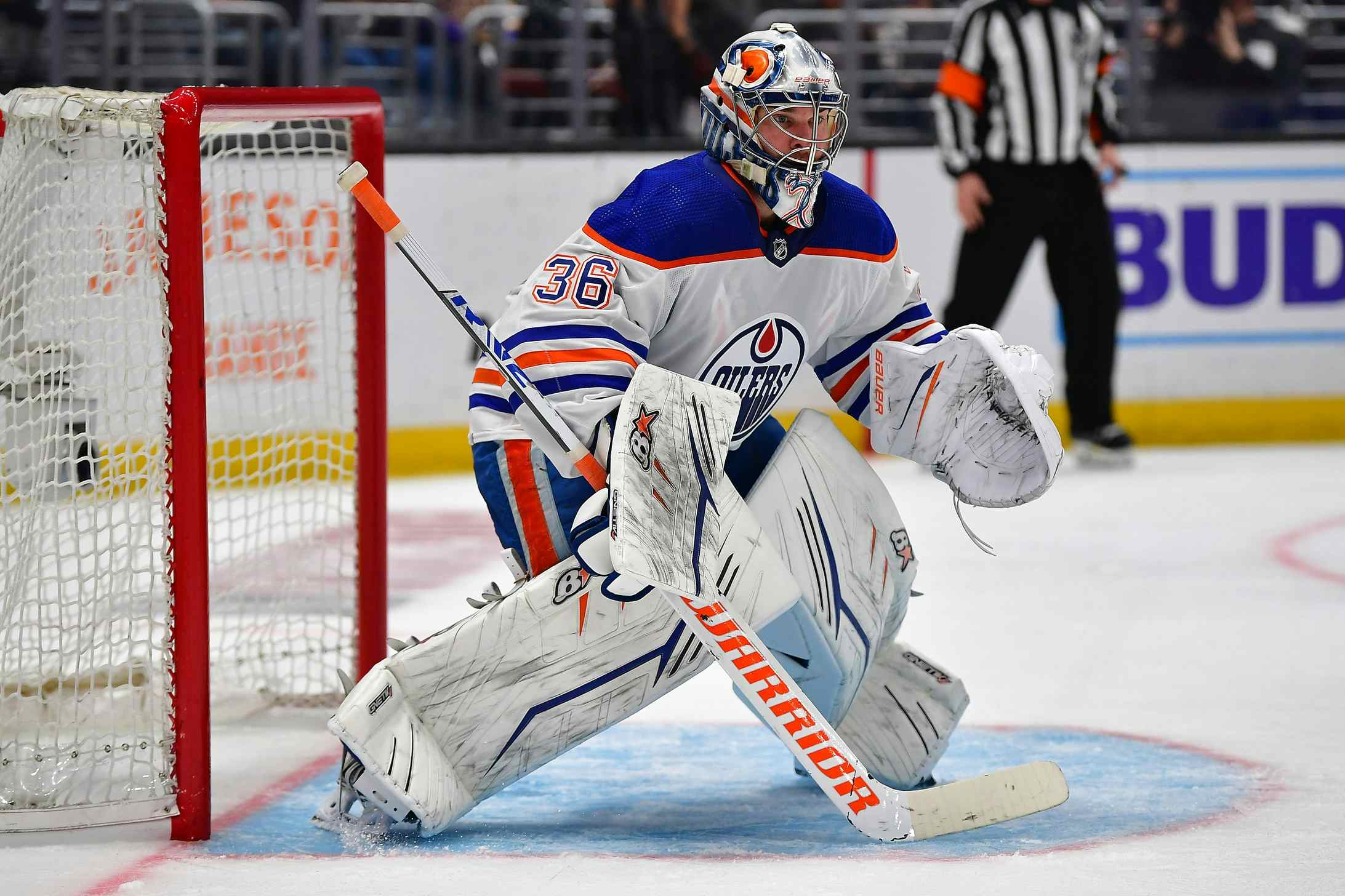Is Cam Talbot elite, obsolete, or somewhere in between?

By Kyle Cantlon
6 years agoThe case of Cam Talbot is a curious one.
As Oilers fan and those across the NHL, in general, try to pinpoint what exactly has gone wrong with the Oilers — secondary scoring, special teams, defensive play, coaching decisions and team structure and make up among the issues commonly debated — there’s been (slightly) less attention placed on Edmonton’s main man between the pipes.
Aside from McJesus, Talbot was the central reason for the Oilers drought-busting playoff season in 2016-17. The 30-year-old lead the entire NHL in games played (73), minutes (3450) and saves (2117) while splitting the NHL-lead in wins with Braden Holtby (42) and ranking third in shutouts with seven. His GAA and save percentage both ranked in the top-12 while he steadied the team’s penalty kill and finally gave the club stability in the crease it had been yearning for the past decade or more.

Apr 12, 2017; Edmonton, Alberta, CAN; Edmonton Oilers goaltender Cam Talbot (33) makes a save during warmup against the San Jose Sharks in game one of the first round of the 2017 Stanley Cup Playoffs at Rogers Place. Mandatory Credit: Perry Nelson-USA TODAY Sports
Many took for granted the kind of campaign Talbot had in 2016-17 and assumed without question (rightly so) that his play would carry over to a season which the Oilers were expected to be one the NHL’s best.
His past two starts epitomize the confusion around whether Talbot is a top starter in this league or simply another middle of the road netminder that won’t quite claw his way into elite standing. He looked dreadful as he was yanked in an 8-3 loss to the Blues on Tuesday but immediately bounced back less than 24 hours with a big win over the Red Wings less than 24 hours later.
The Oilers ‘tender put the team on his back last season and finished just outside of the top-three in Vezina Trophy voting. This year, however, he’s (along with his team) been treading the line between mediocre and dreadful — so what gives? Is he good? Is he bad? Average? Inconsistent? A little bit of everything? A look at where Talbot stands this season compared to last in four key areas: soft goals, big time saves, medium-danger shots and the penalty kill.
Less Big Saves, More Soft Goals
Talbot has kept a pretty similar save-rate on low-danger shots this year as he did last. He ranks 15th this season among starters with a .981 LDSv%, while last campaign Talbot claimed a .979 on low-danger shots, ranking 16th. A very minimal difference in those numbers from year to year shows that The Oilers net minder is allowing “weak” goal at essentially the same rate this season as he was during 2016-17.
Shots from the high-danger areas, including the slot and low slot, have given Talbot a bit more trouble this year, as he’s seen a full point drop in high-danger save percentage from last season. in 2016-17, his HDSv% was .801, ranking 15th among starters. So far this season, he’s ranked 37th among qualified goalies with a .790 clip. His numbers haven’t dropped significantly on quality scoring chances, but average numbers around the league have climbed while Talbot’s have stagnated.
Killing The Penalty Kill

Apr 26, 2017; Anaheim, CA, USA; Edmonton Oilers goalie Cam Talbot (33) makes a save during the first period in game one of the second round of the 2017 Stanley Cup Playoffs at Honda Center. Edmonton won 5-3. Mandatory Credit: Kelvin Kuo-USA TODAY Sports
Talbot’s overall save percentage is down steadily this season (.901 from .919 last season), and a big reason why is a more than a five-point drop in shorthanded save percentage. When the Oilers were down a man (or two) in 2016-17, the 30-year-old posted a .874 save% and the team’s overall PK ranked 17th in the league with an 80.7% kill rate — not great, but enough to get by with a potent offense.
This season, Talbots SHSv% has dipped mightily down to .819, while the Oilers performance when shorthanded has mirrored the drop in their goaltender’s play as Edmonton currently holds the third-worst PK in the NHL at 74.4 percent.
Medium-Danger Scoring Areas
By far the biggest concern for Talbot and the Oilers has to be his monumental drop in save percentage on shots from medium-danger scoring areas — where the majority of shots in the NHL derive from. On shots from the high slot, centre point and inner-half of the faceoff circles, Talbot ranked 2nd in the NHL with an absurd .949 MDSv%, good enough for second among all starting goaltenders.
This season has been a horrendously different story, however, as Talbot has seen his medium-danger save percentage drop all the way down to .888, which ranks 42nd among qualified goalies through the quarter-mark of the campaign.
Everything starts from the goals crease out. Line combinations, possible trades, coaching style and management decisions can be discussed until faces turn blue, but until Talbot can rediscover his game that made him one of the NHL’s best stoppers last season, its all a moot point.
Recent articles from Kyle Cantlon





